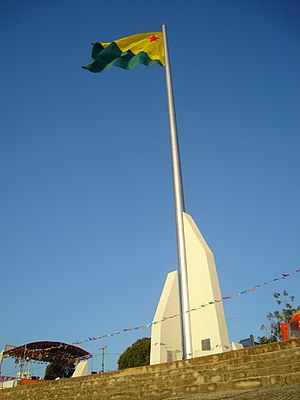This article needs additional citations for verification. (May 2013) |
This article includes a list of references, related reading, or external links, but its sources remain unclear because it lacks inline citations. (August 2024) |
| Acre War (Acrean Revolution) | |||||||||
|---|---|---|---|---|---|---|---|---|---|
 Memorial of the centenary of the Acrean Revolution in Rio Branco, capital of Acre | |||||||||
| |||||||||
| Belligerents | |||||||||
|
Supported by: |
Supported by: | ||||||||
| Commanders and leaders | |||||||||
|
|
| ||||||||
| Units involved | |||||||||
|
Columna Porvenir (militia) |
Civil militia Support: | ||||||||
| Casualties and losses | |||||||||
| Unknown | Unknown | ||||||||
The Acre War, known in Brazil as Acrean Revolution (Portuguese: Revolução Acreana) and in Spanish as Guerra del Acre ("War of the Acre") was a border conflict between Bolivia and Brazil over the Acre Region, which was rich in rubber and gold deposits. The conflict had two phases between 1899 and 1903 and ended with an Acrean victory and the subsequent Treaty of Petrópolis, which ceded Acre to Brazil. The outcome also affected territories disputed with Peru.